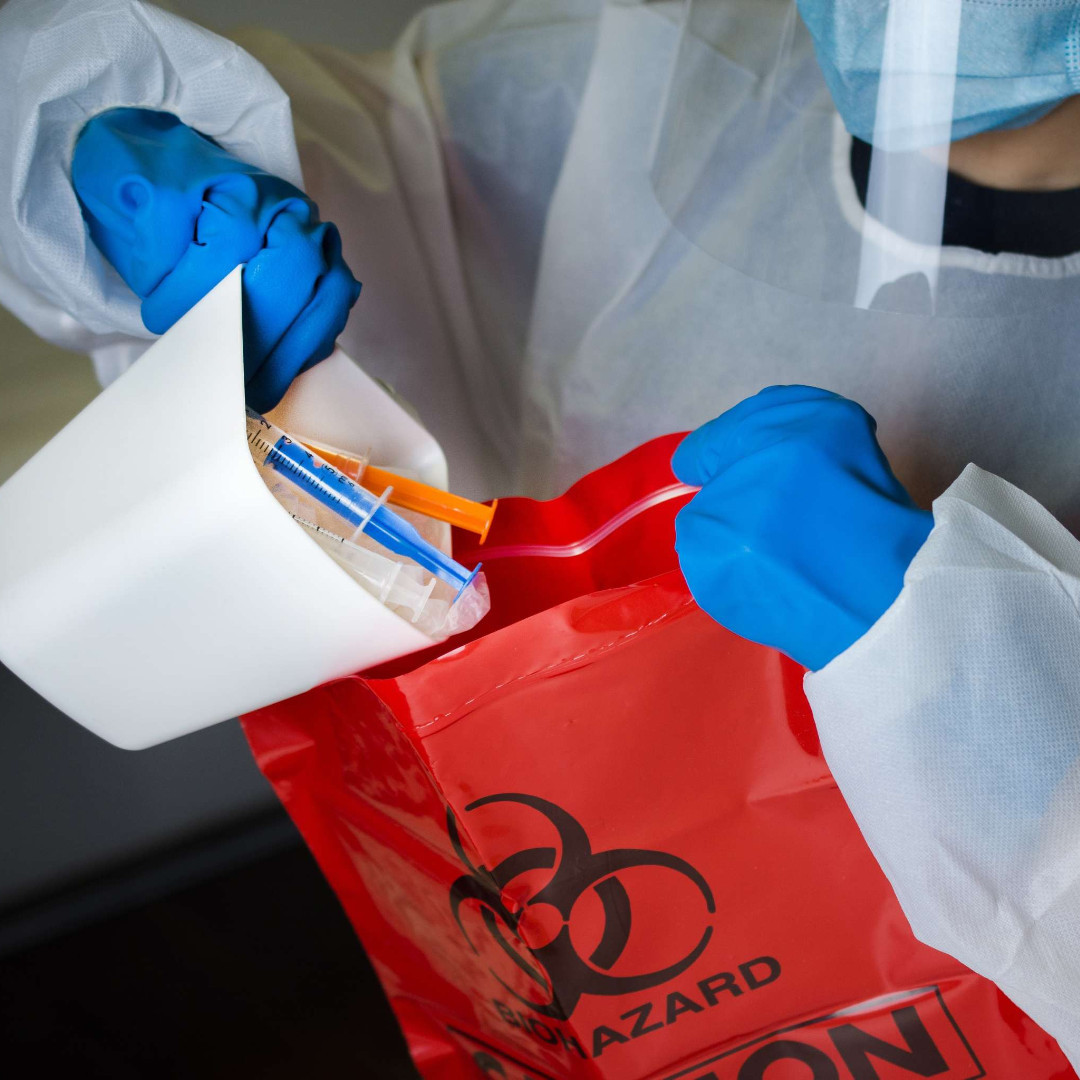One of the most critical aspects of healthcare is the management of the waste generated at the facilities. A variety of businesses generate medical waste including hospitals and veterinary clinics, assisted living facilities and nursing homes, tattoo and body piercing parlors. No matter what type of business you are in, understanding how to properly dispose of medical waste will not only help you keep your employees and the public safe, but it will also keep you in compliance with government and industry standards.
Typically, staff is trained to use specialized waste containers to dispose of waste, as well as a means of removing it from the property. The containerization process should be simple, streamlined, and efficient to keep operations running smoothly and safely. For many organizations, medical waste disposal is not just a process, it is a strategy. Waste Medic provides education and experienced consultation, as well as comprehensive and agile solutions, tailored to suit large or small organizations with any number of unique needs.
The Importance of Bin Consistency
The identification and separation of healthcare waste streams can have significant implications for facilities of any size. Ensuring each waste type is disposed of in the proper container is critical to the safety of staff – both yours and ours! Some of the common (and costly) considerations of incorrectly disposed medical waste include:- Risk to staff and patients through exposure or unauthorized access to infectious wastes or controlled substances
- Compliance breaches and risk of fines for the incorrect disposal and treatment of hazardous materials
- Treatment complications imposing human and environmental risk from wrongly categorized hazardous wastes
Color Coding Medical Waste
Color coding represents the very basic principle that medical waste doesn’t all go to the same place. Different kinds of waste require unique and specific handling methods. Medical waste container colors generally represent the following:- Red: These bins represent biohazardous material. This can include materials or instruments that involve body fluids like blood or deal with casings, tubing, or syringes that that has contained body fluids
- Yellow: These bins represent radioactive materials and often have the sign for radioactivity on it. It often contains items used in chemo or radiotherapy, including gloves and gowns.
- Black: These bins represent hazardous waste like chemicals, bad or dangerous medications, and chemo treatment.
- Blue: These bins represent non-hazardous solid waste. This can include regular pills and medication and general pharmaceuticals.
- Reduce the quantity of biomedical waste that needs handling special treatment
- Prevent the reuse of sharps or other types of waste for illegal purposes
- Provide more opportunities for recycling medical waste after proper steam sterilization











